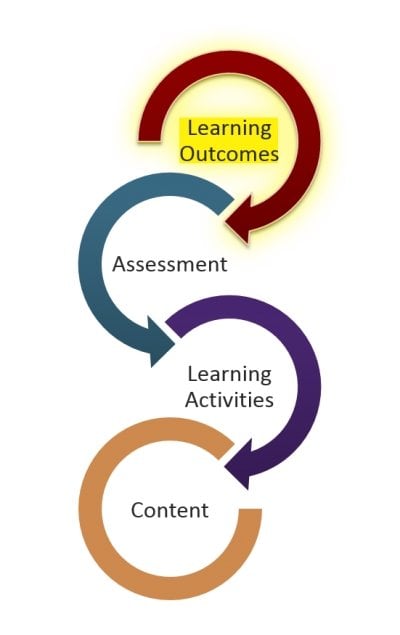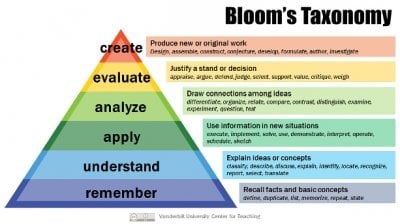Start with course learning objectives
When you begin creating a course, you want to design with the end in mind. The best way to approach this is to start by writing measurable course learning objectives. Course learning objectives are the destinations on your course map. They state where you want students to go. A learning objective is a statement that clearly and precisely describes what the learner will know and be able to DO by the end of the course, module or unit.
Learning objectives need to specify student actions that are observable and measurable. That way they can be assessed in an objective manner. Frequently the verbs understand and learn will appear in learning objectives that are not observable and measurable. When you encounter this situation, ask yourself “how will I know my students understand
this?” Your answer to that question will often provide the action verb you need to
create an observable and measurable learning objective
In addition to being observable and measurable, learning outcome statements have to focus on student action. They are about students showing what they have learned, not about the instructor describing how they are teaching. For example, "The students can accurately describe the process of photosynthesis" is a learning objective while "I will show a PowerPoint presentation on photosynthesis and give the students a quiz" is not.
Generally speaking, you will have 3-6 course learning objectives. Course learning
objectives are generally higher-order thinking skills that require multiple subordinal
skills or knowledge to achieve. Once you’ve decided your course learning objectives,
you then need to break them down into module or unit learning objectives.
How to write good learning objectives
In their basic form, learning objectives are typically structured as:
By the end of the course, students will be able to...[action verb] + [object].
The place where learning objectives often fall short is the verb, the action that students will do to demonstrate their learning. Many faculty members start their verb search with "Bloom's Taxonomy".

If you'd like to review active verbs for learning outcomes based on Bloom's Cognitive Taxonomy, here is a list of Bloom's Cognitive Taxonomy verbs.